Project Pollinator
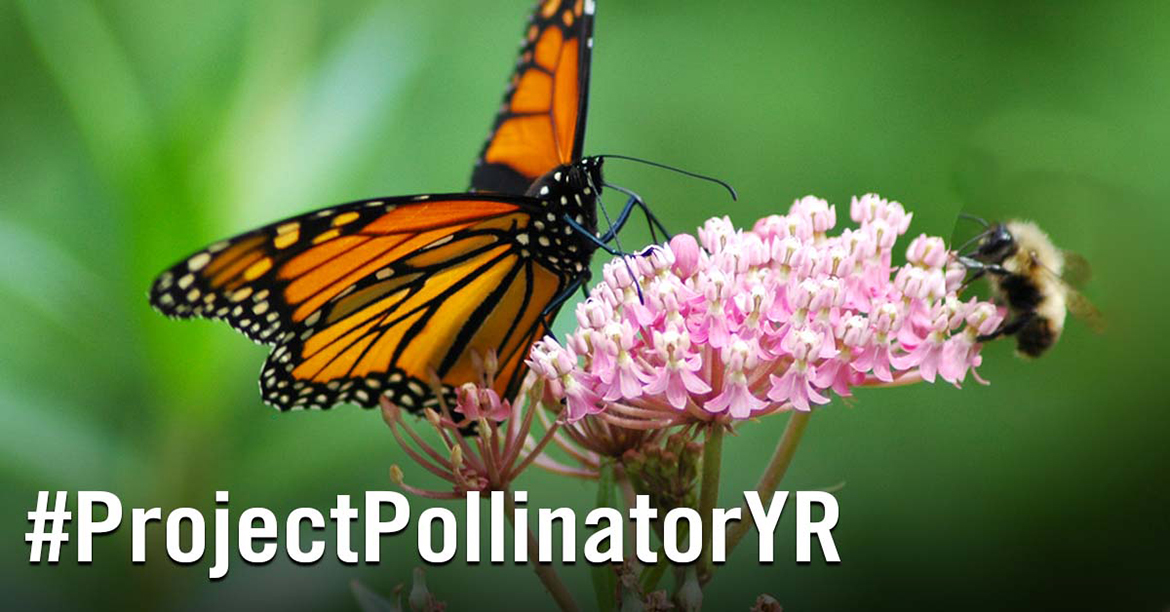
Thank you for helping us name the bee and butterfly pollinator meadow in the Township of King.
Name suggestions were collected on this web page from June 12 to June 21, 2024. We thank all who put a name forward, but only original/unique names were considered. We invited you to help us name the pollinator meadow by voting for your favourite and thank all who took the time to cast a vote.
The winning name submission with more than 50% of the total votes cast is Beesy Street.
The name will be printed on a permanent sign and installed at the meadow in the coming months.
Thank you for helping us name the pollinator meadow in your community
Thank you to the students and community members that helped us plant bee and butterfly pollinator meadows in communities across York Region.
Name suggestions were collected during the planting events and were posted on this web page for the community to vote for their favourite. We thank all who put a name forward and who took the time to vote.
The winning name submissions are:
- Bee-lieve in Better (Town of Aurora)
- Pollinator Paradise (Town of East Gwillimbury)
- Hope Meadow (Town of Georgina)
- Pollinator Paradise (City of Markham)
- Pollination Station (Town of Newmarket)
- Butterfly Way (City of Vaughan)
- Ballantrae Meadow (Town of Whitchurch-Stouffville)
The winning name submissions will be printed on a permanent sign that will be installed at the pollinator meadows.
Frequently Asked Questions
What is the purpose of these meadows?
York Region has been home to several initiatives to help increase our sensitive insect populations. This project aims to create pollinator meadows to increase the population of butterflies, bees and other insects.
Most of the world’s flowering plants depend on a pollinator to move pollen from the male plant to female plant to produce vegetables, fruits, nuts and seeds, including farm crops.
Transforming these Regionally owned boulevards (green space that runs alongside roads) into environmentally friendly meadows replaces existing grass with flowering plants, eliminating the need to cut the grass with diesel mowers, which will reduce greenhouse gas emissions. The addition of plants will also assist in the removal of carbon dioxide from the environment while producing clean air.
What is the benefit of a meadow to my community?
Pollinators support our ecosystem that clean the air, stabilize soils, protect from severe weather and support other wildlife by cross pollinating, a process that allows plants to produce vegetables, fruit and seeds needed to create more plants.
It is estimated some 85% of the world’s flowering plants depend on a pollinator to move pollen from the male plant to female plant to produce vegetables, fruits, nuts and seeds. This includes about 35% of the crops people harvest and eat, meaning one out of every three bites of food you eat is there because of a pollinator. Pollination is also required for plants to reproduce, creating a plentiful food supply for the animals that produce dairy and meat.
The creation of a pollinator meadow will also replace existing grass with flowering plants, eliminating the need to cut the grass with diesel mowers, which will reduce greenhouse gas emissions. The addition of plants will assist in the removal of carbon dioxide from the environment while producing clean air locally.
The public space will encourage residents to enjoy the outdoors by providing a destination where they can observe and learn about the importance of creating pollination sites as well as the significant role pollinating bees and butterflies play in our local environment by reading educational signs.
How are the meadow locations selected?
Several factors were considered when the meadow locations were selected. For example, the first bee and butterfly pollination meadow created on Bayview Avenue, south of Bethesda Sideroad in the City of Richmond Hill was selected because of the location’s proximity to water, lower traffic volumes, community centre and public park facilities.
What can I expect to see when the meadow is created?
York Region crews will be at the meadows to prepare the meadow beds for planting when weather conditions are favorable. Preparation will include grading and the removal of some of the land, which will be replaced with topsoil. Residents will see and may hear the equipment when onsite.
Reclaimed stone from Regional roads projects will be used to stabilize the slopes surrounding the meadows if needed.
Following the preparation of the meadow bed and when weather conditions are ideal, vegetation such as native milkweed, willow and silvery lupines will be planted to attract pollinating bees and butterflies, allowing them to thrive.
How are the types of plants selected for the meadow?
York Region’s Roads and Traffic Operations worked with Forestry to ensure the appropriate plants and flowers are planted to encourage pollination and create an inviting and sustainable environment.
Where and when will meadow updates be available?
York Region continues to work toward finalizing the details for the new meadow locations.
Residents and the community are invited to visit york.ca/ProjectPollinator and follow @YorkRegionGovt on Facebook and Twitter for update and event information.
Can I volunteer or get involved with my local meadow?
York Region continues to work on funding and further details for each of the planned pollinator meadow locations across the Region. All members of the community will be invited to participate in the planting of the meadows, and we will communicate that opportunity when the details are finalized.
Please continue to visit york.ca/ProjectPollinator for meadow construction updates and details regarding how you can get involved.
Who can I contact with my questions/concerns?
If you have questions or concerns, staff will be pleased to respond. Contact us using any method noted below and quote “Project Pollinator” in your inquiry:
York Region Transportation, Public Works
Phone: 1-877-464-9675 ext. 75000
TTY: Dial 711 with a TTY device
Email: @email
York Region pollinator meadows
Aurora
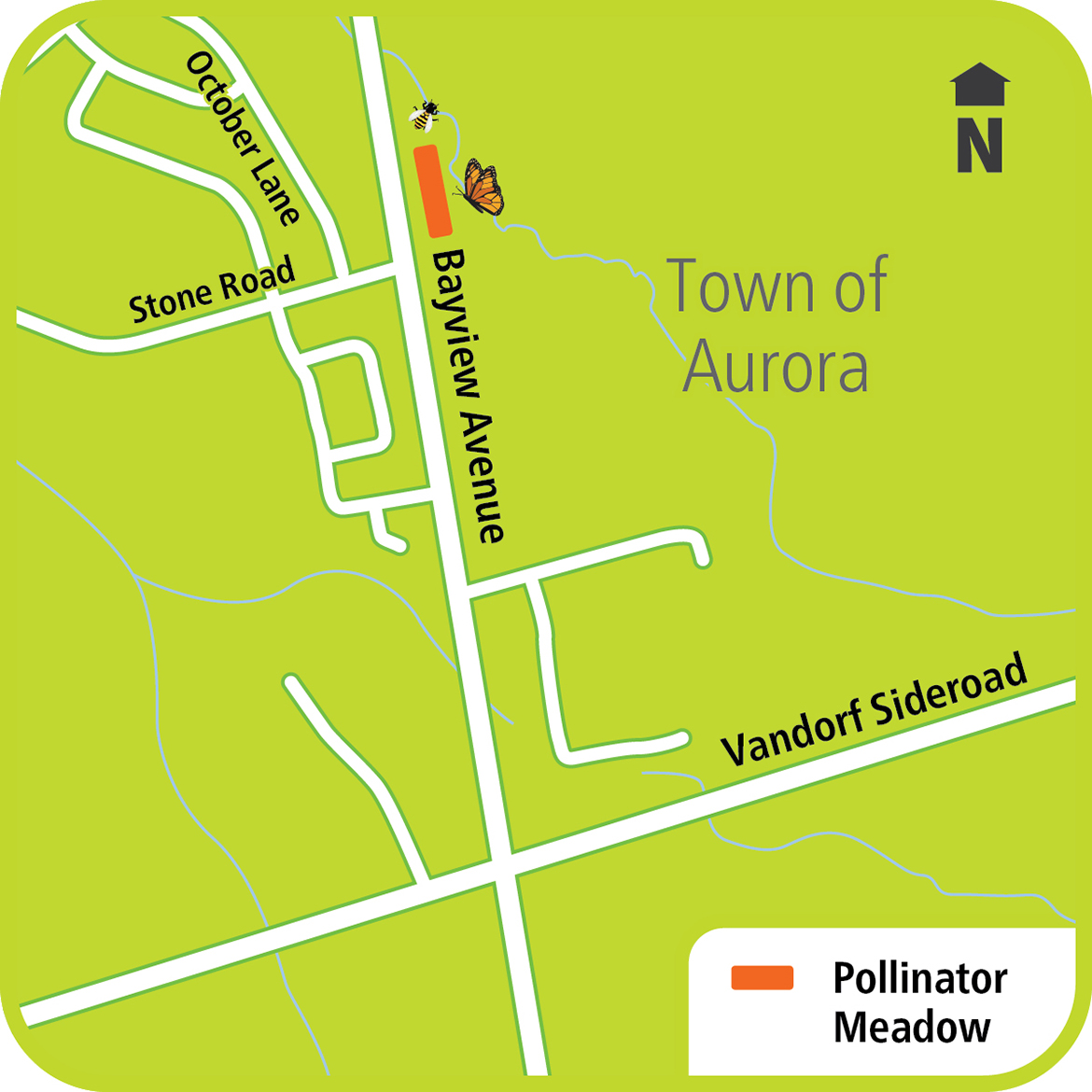
Location: Bayview Avenue and Stone Road
East Gwillimbury
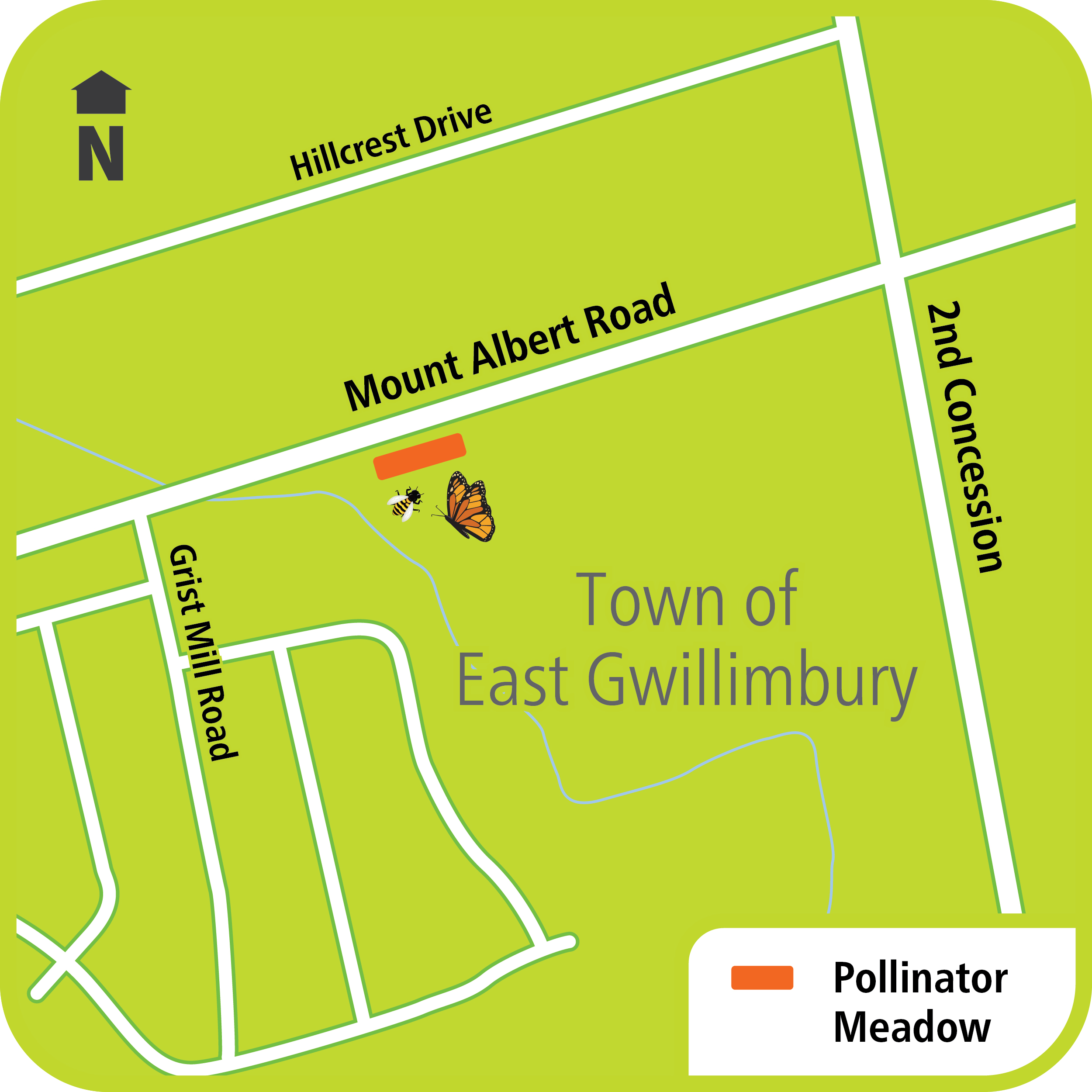
Location: Mount Albert Road west of 2nd Concession
Georgina
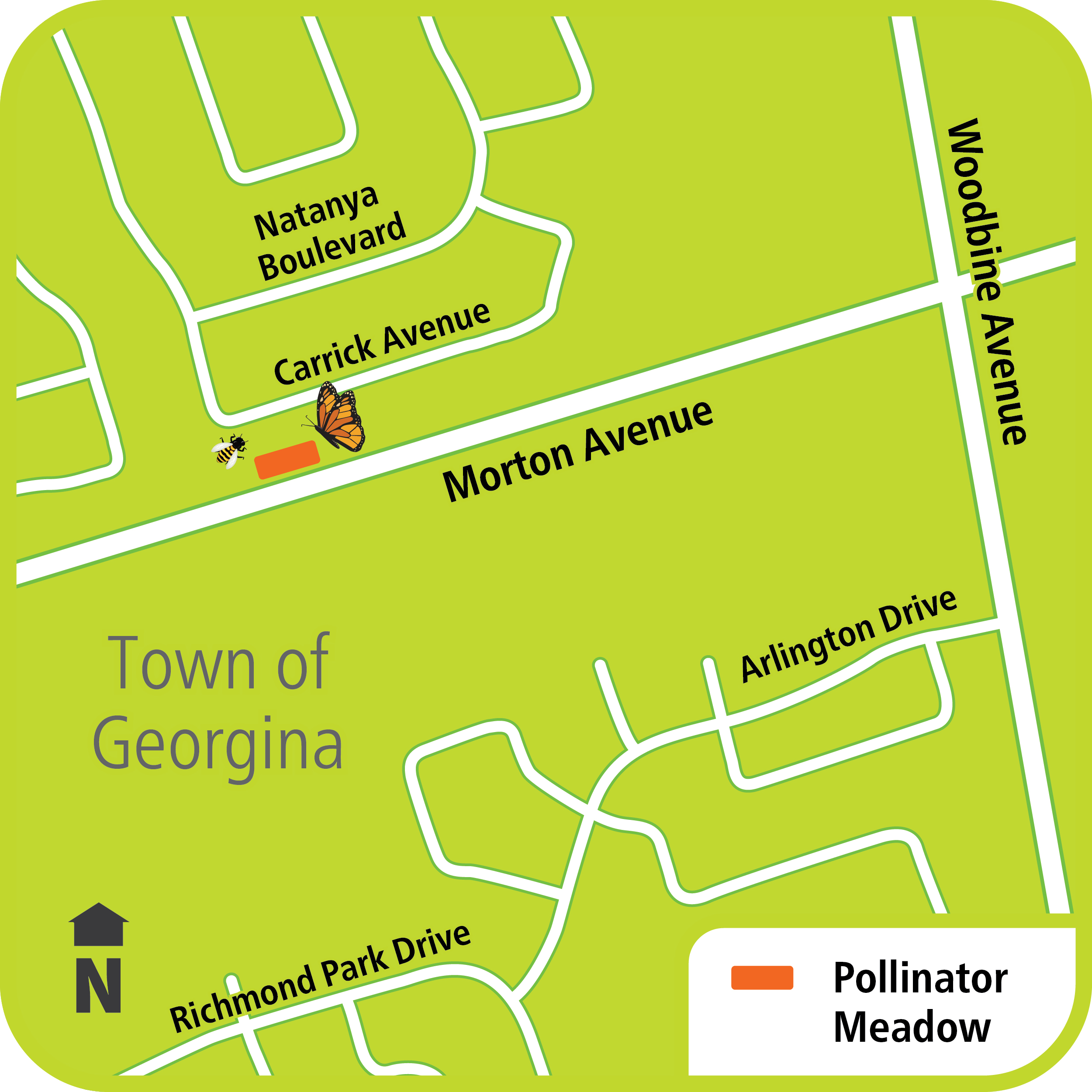
Location: Morton Avenue west of Woodbine Avenue
King
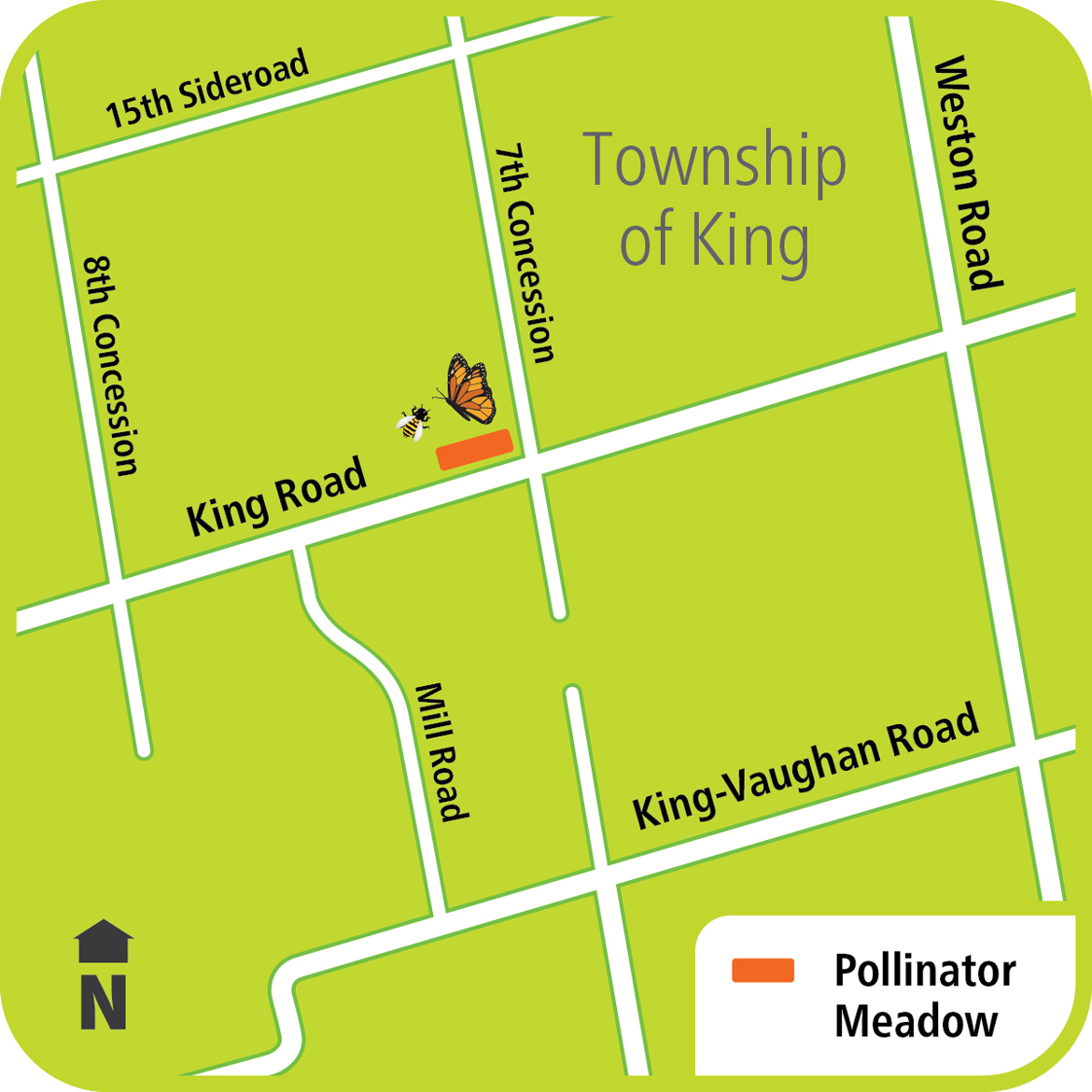
Location: King Road and 7th Concession
Please note the location of the meadow has changed to increase visibility in the community.
Markham
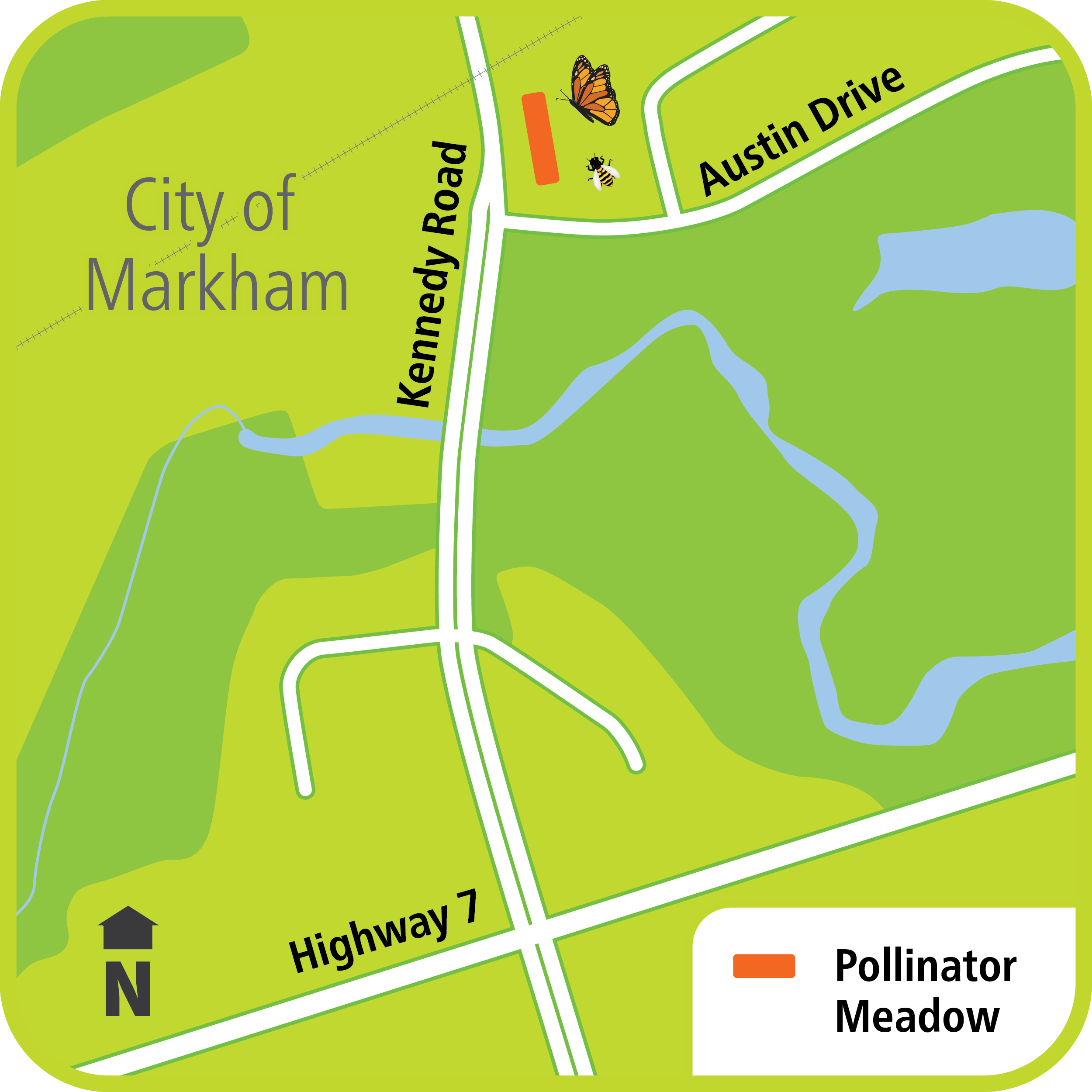
Location: Kennedy Road north of Austin Drive
Newmarket
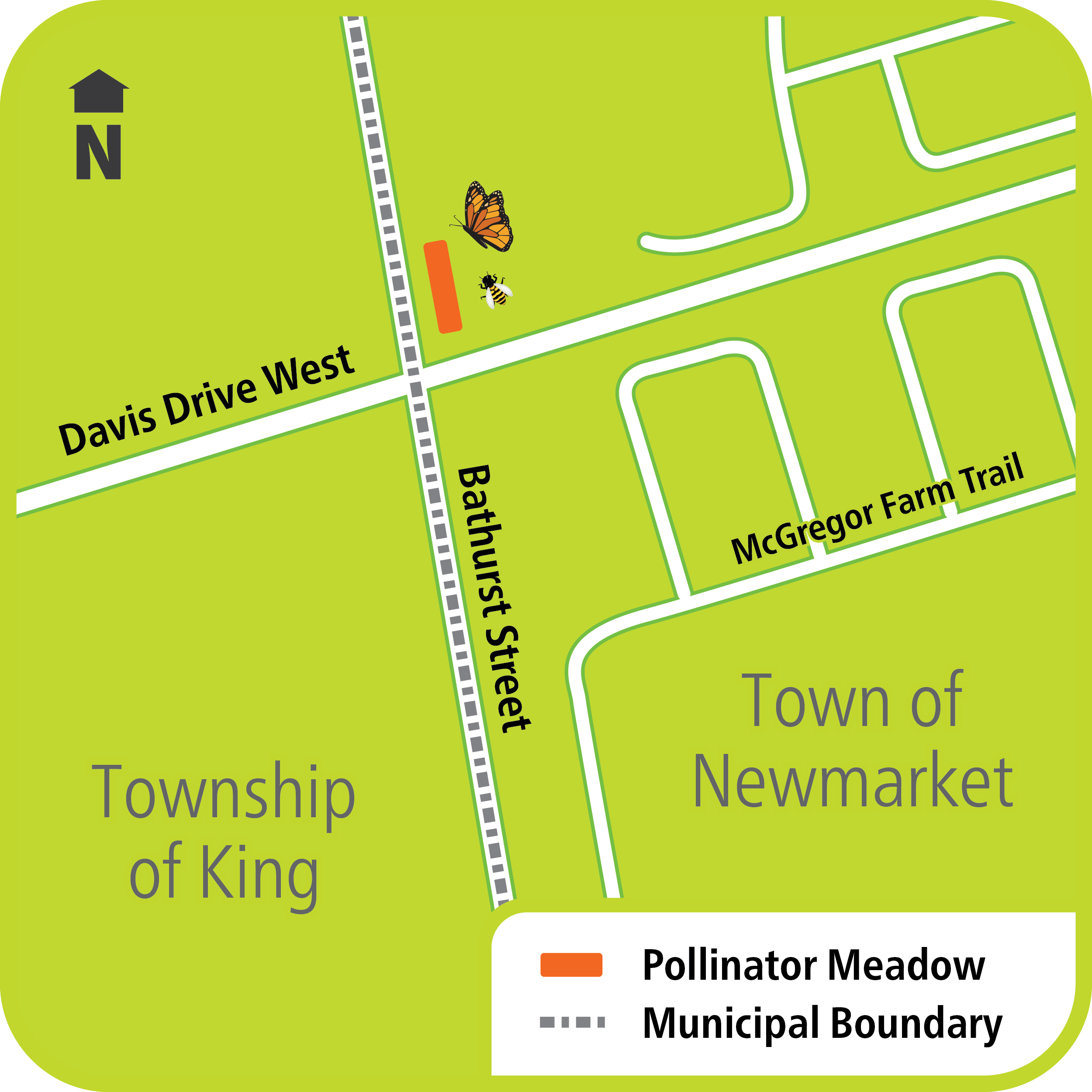
Location: Bathurst Street north of Davis Drive
Richmond Hill
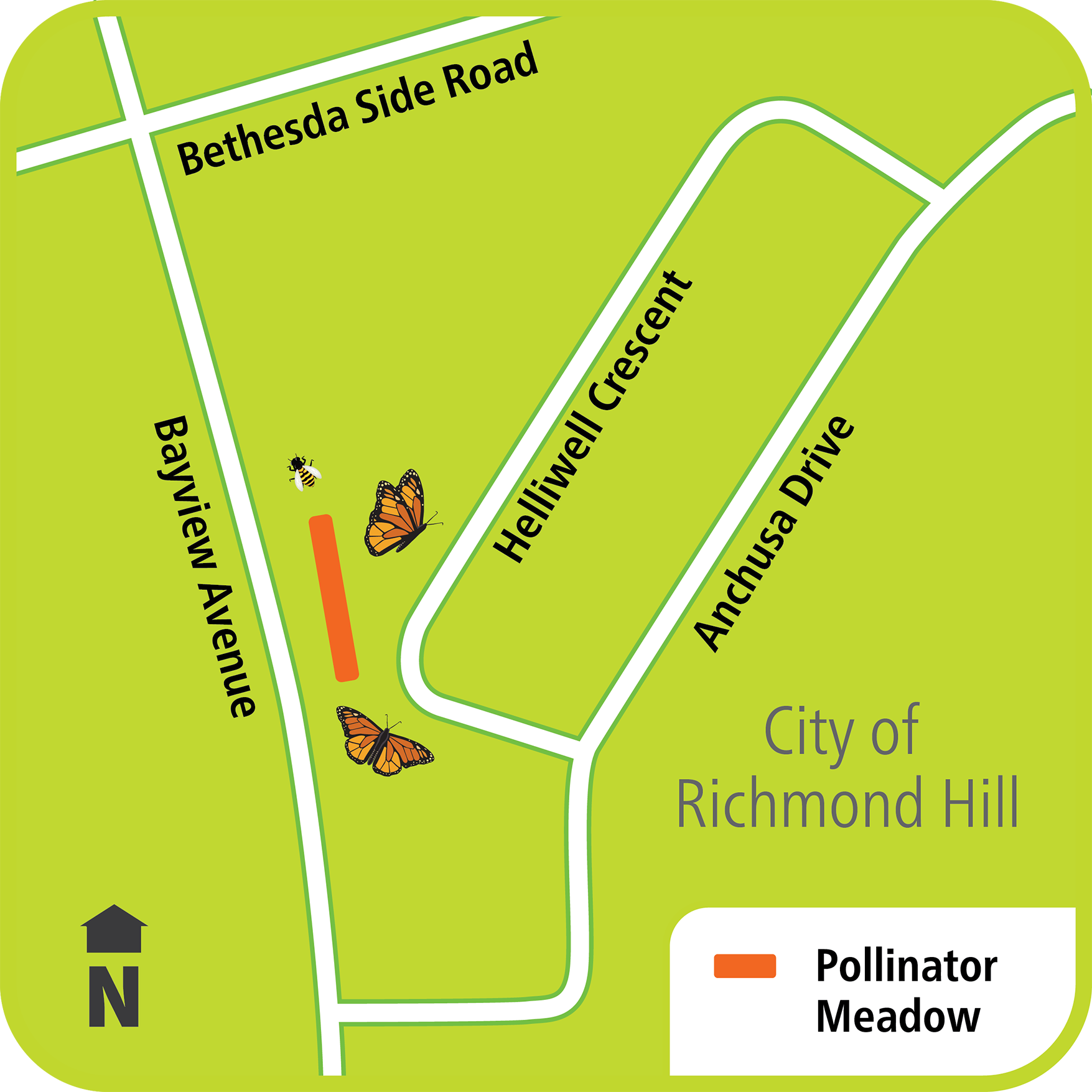
Location: Bayview Avenue, south of Bethesda Side Road, City of Richmond Hill
Size: 50 metres by 5 metres
Plantings: Approximately 1,100 plants including native milkweed, willow and silvery lupines
Thank you to all who took the time to review and vote for your favourite name for our pollinating bee and butterfly meadow located on Bayview Avenue in the City of Richmond Hill.
We are pleased to announce the winning submission is Bahareh’s Garden.
In loving memory of Bahareh Karami, a York Region Technologist and passenger on Ukraine International Flight 752 who sadly perished, along with 175 other passengers and crew, on January 8, 2020, when their flight from Tehran to Kiev was shot down shortly after takeoff.
A permanent sign has been installed at the meadow.
Congratulations to Paul S. who was awarded the prize pack consisting of local honey, a gift certificate to a local nursery and York Region branded items.
Vaughan
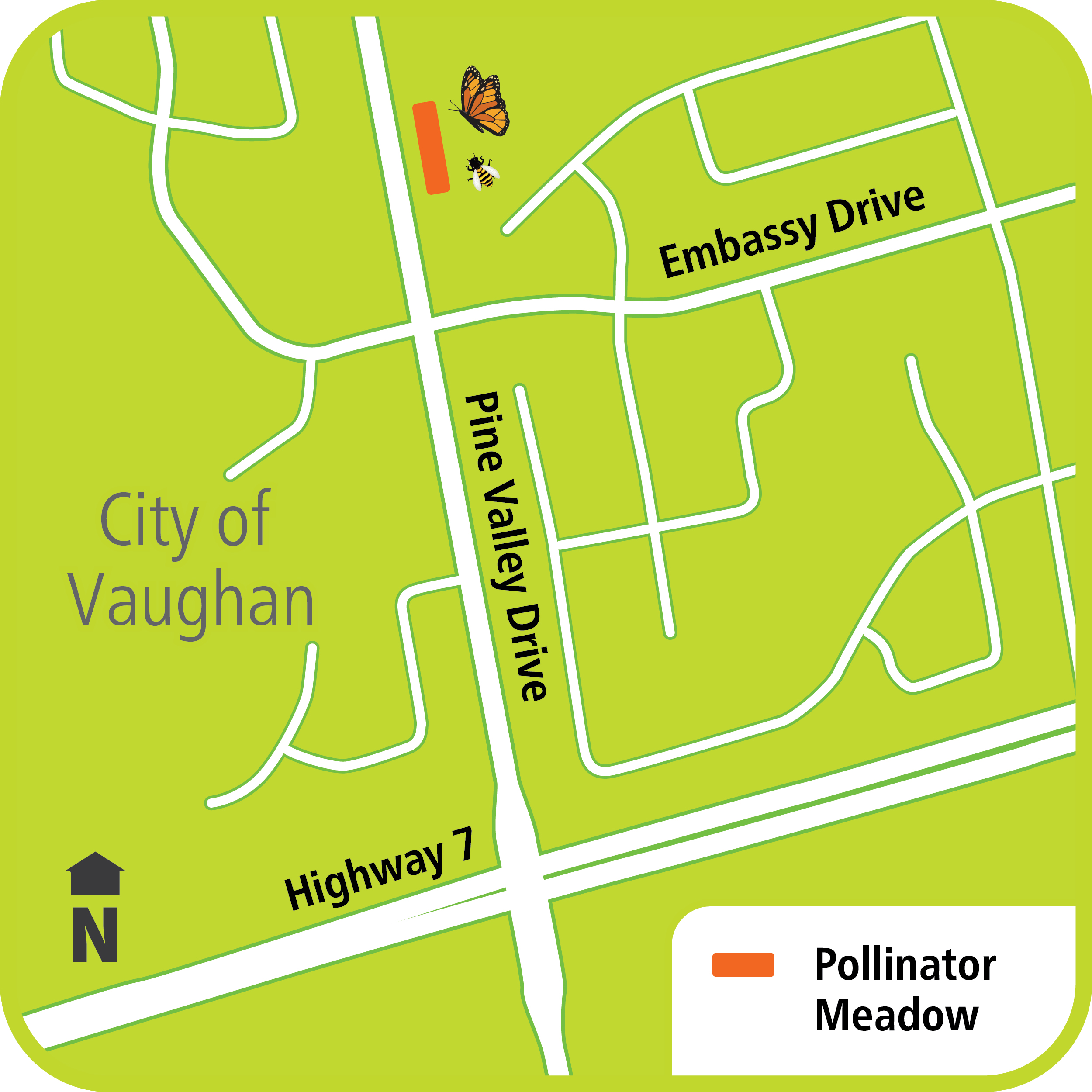
Location: Pine Valley Drive north of Highway 7
Whitchurch-Stouffville
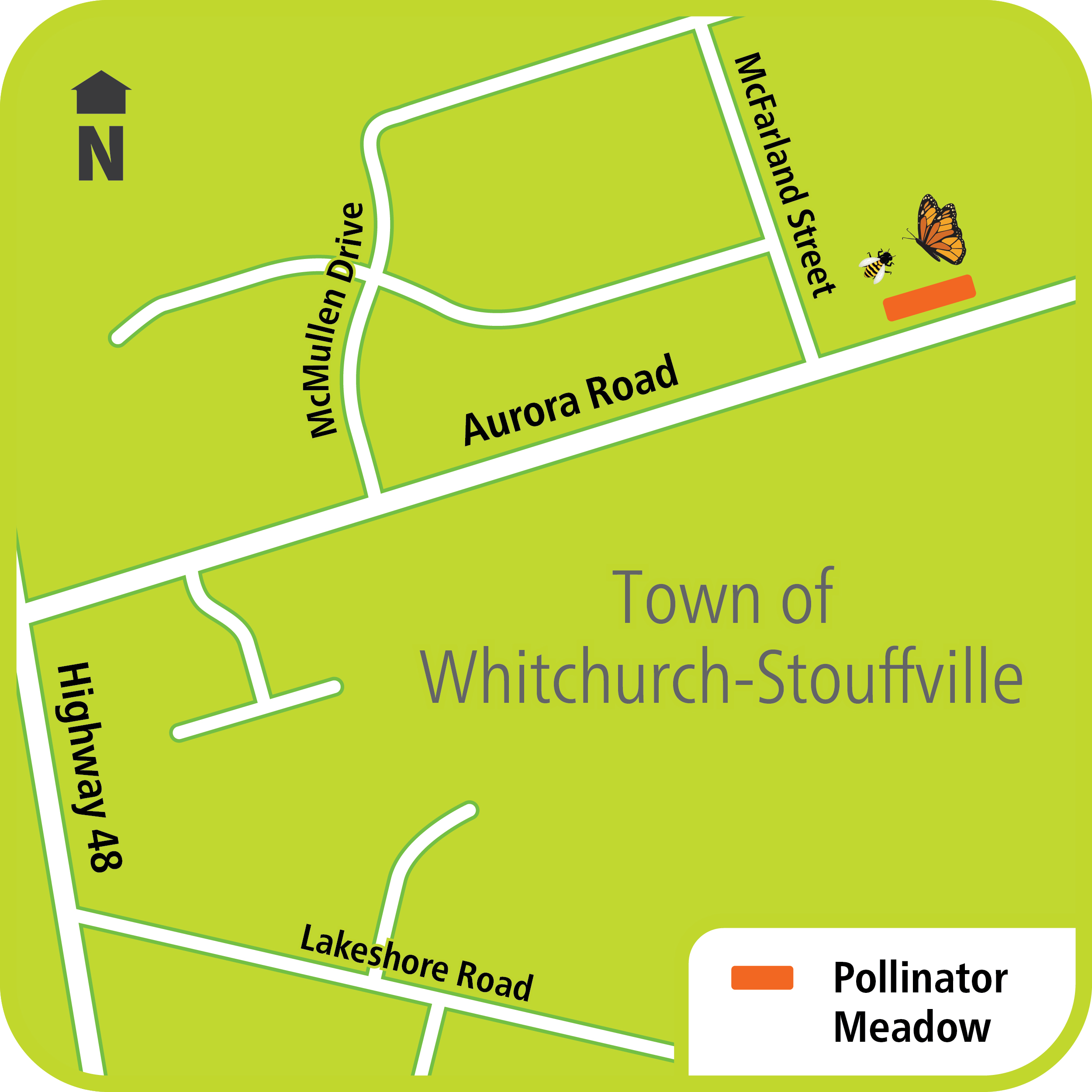
Location: Aurora Road east of McFarland Street

General Inquiries:
York Region Transportation, Public Works
Phone: 1-877-464-9675 ext. 75000
TTY: Dial 711 with a TTY device
Email: @email
@YorkRegionGovt


